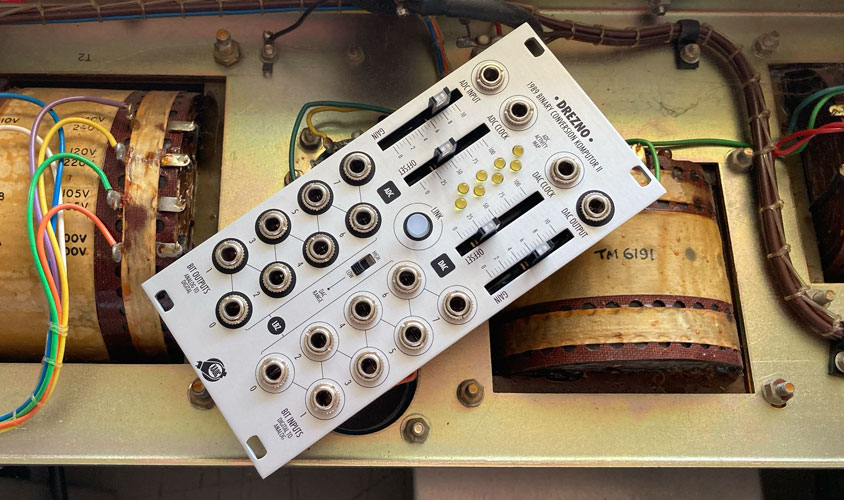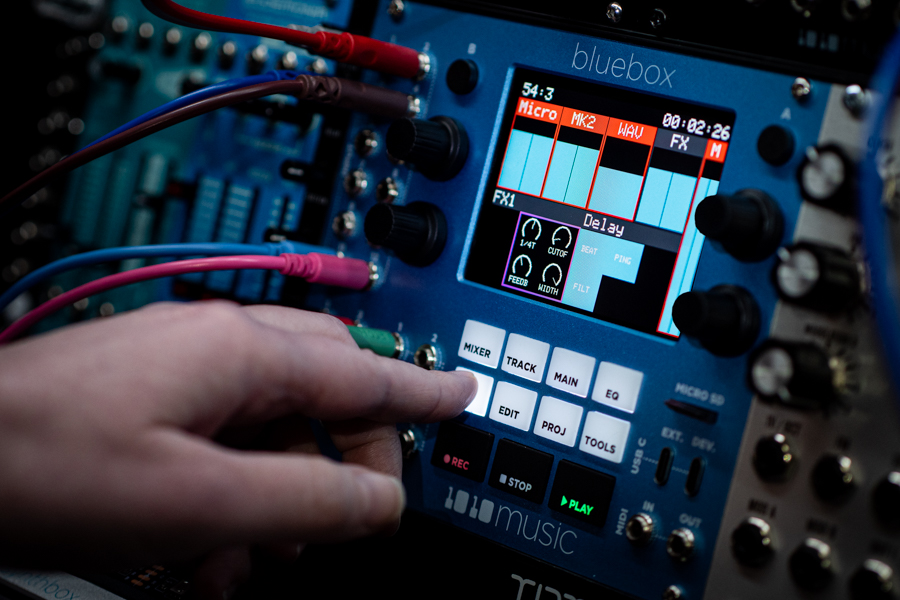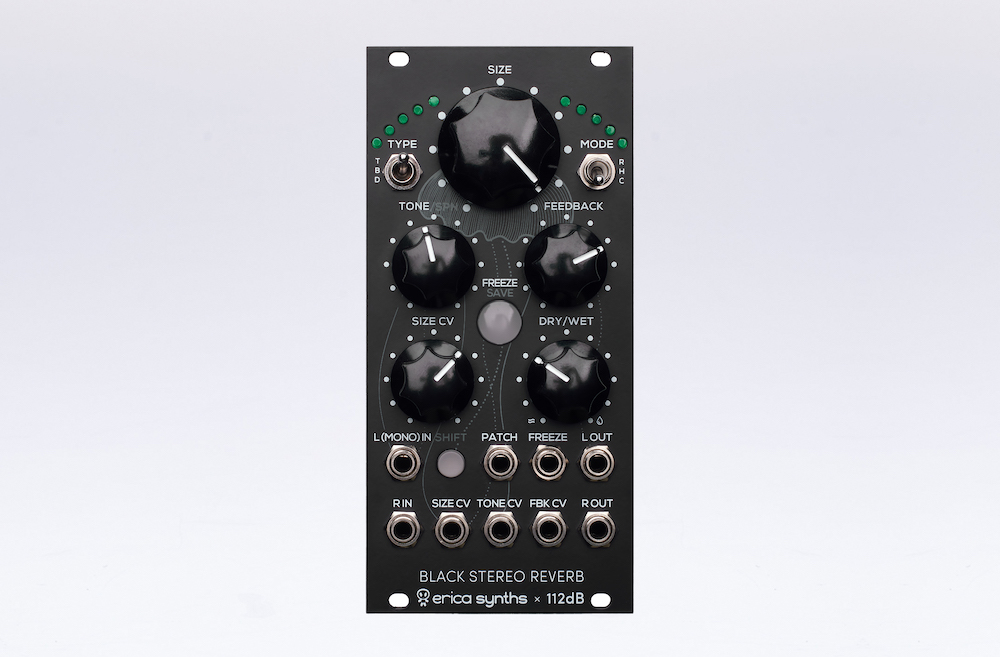December 2023 Eurorack round-up
Our final modular round-up of the year includes a monster synth voice from Jomox, digital creativity from Xaoc and a typically slick reverb from Erica Synths.

Jomox Mod FM
Despite being best known for their outstanding drum machines, German veterans Jomox’s synth offerings should never be overlooked. The Mod FM is a module which has been a very long time in the making, first announced at the Superbooth trade show way back in 2021. Now it’s finally here, what we have is an eight-voice FM synth module with analogue filters. The FM side of things is based loosely on Yamaha DX100-style four-voice FM synthesis, while the analogue side uses the excellent Oberheim/Sequential Circuits-inspired SSI2140 analogue filters.
It’s obvious that Jomox have been ambitious with the design of the Mod FM, and there are elements of the formula which could easily get unmanageable in the wrong hands. It’s fully eight-voice multitimbral, for a start, with each voice having its own CV/gate inputs and individual output. Furthermore, the operators can be routed to modulate each other in any way you choose via the main control matrix. Furthermore, CV control of parameters adds an extra layer of complexity when you consider modulating the synth engine from external sources. Thankfully, there’s a real logic to the way things have been done. Single Mode locks all eight voices to the same sound, getting you started with a more manageable polyphonic approach before switching to Multi Mode. You can also select from 26 preset algorithms before tackling the 16-knob FM matrix in ‘no algorithm, free matrix’ mode.
Sonically, it’ll do all the classic FM stuff like twangy basslines, cold pads, metallic percussive sounds and so on, but the addition of analogue filters really is the secret here, giving that enchanting combination of digital character and analogue warmth. It’s a winning formula which backs up its complexity with some truly top-class sound.
At a whopping 56 HP, the Mod FM a gigantic form factor for a Eurorack module, but you’re getting an entire synth here, which also happens to be patchable. As you might expect for an eight-voice hybrid synth, it’s not cheap either, coming in at £878. It’s a big investment, but you’re getting something quite special for your money. Full review coming soon.

Xaoc Devices Drezno II 1989
Xaoc Devices’s Leibniz Binary Subsystem is a set of modules designed to convert analogue audio and CV signals into 8-bit digital signals, which can then be processed in a number of interesting ways. The Drezno module is the heart of the Subsystem, acting as the front end which carries out the A/D conversion, and also converting back from digital to analogue. This updated version features higher resolution converters, which means it can be used as a standalone module for pitch quantisation as well as generating melodies and trigger patterns or as a square wave folder/frequency multiplier.
The real fun, though, is to be had from processing via other Leibniz modules: Lipsk, Gera, Jena, Erfurt, Poczdam, Rostock, Ostankino II, and Odessa. Everything from sequence automation to digital waveshaping is possible using this unique range of modules. They make you think in a very different way to any conventional synthesis approach, but there’s a huge range of creative possibilities to be had. A very underrated series, well worth exploring.

1010 Music Bluebox
The original desktop version of 1010’s Bluebox proved a bit of a stealthy success story. On the face of it, quite a simple, tiny little digital mixer and recorder proved so intuitive thanks to its excellent touchscreen interface that it became widely loved as a centrepiece of hardware studio and live setups. Rejigged here for Eurorack use, it’s very much the same basic approach: 12 inputs and four outputs, built-in effects and EQ, plus a separate headphone mix and the option to record individual tracks or a stereo mix to an SD card.
A fair number of tweaks have been made to the formula to make it even more useful to modular musicians. You’ve now got 12 mono inputs rather than six stereo, and likewise four assignable individual outputs rather than two stereo pairs. There’s also an analogue clock input, USB-C to record to a computer and, crucially, six CV inputs which can be assigned to control mix settings. That’s not to say the user experience is vastly different, given it’s the same track count, but it’s presented in a more Eurorack-friendly way that reflects you’re more likely to be working with mono input signals and CV control. It its a fair bit more expensive than the desktop version, but the £120 or so difference seems fair considering the added features. An excellent choice for simplifying the process of mixing and recording all within your modular system.
Doepfer A-147-5 Quad VCLFO
Doepfer always nail the basics and that’s exactly what you get with this compact but effective quad voltage-controlled LFO. The four linked triangle-wave LFOs are all controlled by a master frequency knob. The speed of LFOs two to four can then be offset from the main frequency using three ΔF knobs. Four CV inputs then allow you to modulate the frequency of all four LFOs, either simultaneously by plugging a CV signal into input 1, or independently by plugging into each input separately. The result is a linked array of modulation sources, which Doepfer also suggest can be mixed together to create complex signals, or used to track the same 1V/oct CV signals used to control your VCOs, modulating the LFO speed along with the oscillator pitch. Great value at just under £100.

Erica Synths Black Stereo Reverb
Erica Synths have been on a roll this year with top quality basics such as the Stereo Compressor and Black DJ VCF among many others. That trend continues with the Stereo Reverb, developed in conjunction with the excellent Dutch software company 112dB. The Black Series is Erica’s high-end range, and the Stereo Reverb is described as a ‘hi-fi’ module, but that shouldn’t imply it lacks character. This isn’t all about pristine ambience but in fact replicates the sound of tape echo, analogue bucket brigade device (BBD) units from the 80s and ‘dirty BBD’ for added grit. A mode switch allows virtual ‘room sizes’ for all three algorithms: Room, Hall and Cathedral. Sonically, it’s an absolute joy, delivering real-time playability and old-school vibes on drums in Tape/Room mode, through to wonderfully gritty textures when freezing the sound and adjusting the Size control in Dirty mode. Comprehensive CV control rounds out yet another banger from Erica. Here’s to more in 2024.
Greg Scarth